Art World
Andrew Bolton on Breathing New Life into the Met’s Most Fragile Garments
The curator explores nature and the cycle of life in the profound “Sleeping Beauties: Reawakening Fashion” which recently opened at the Met.
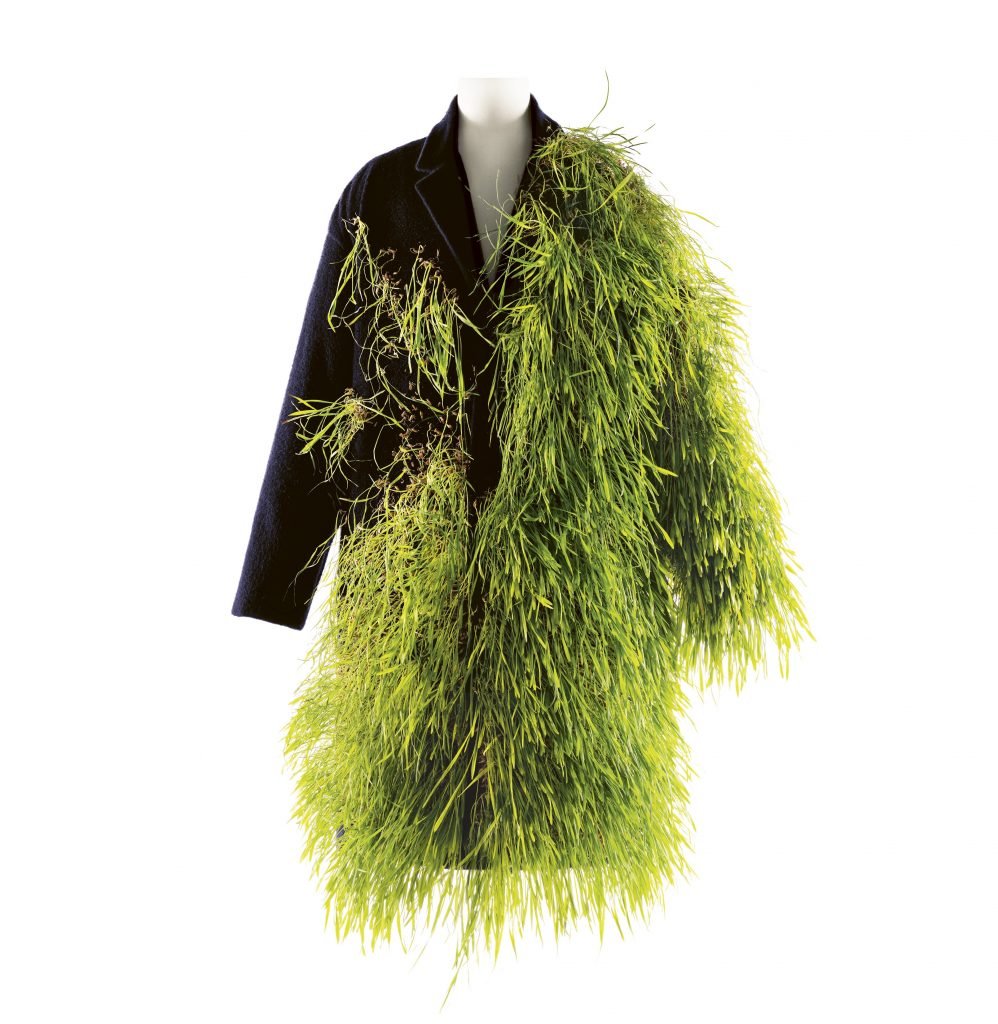
Curator Andrew Bolton has a lot of explaining to do about the Metropolitan Museum of Art’s new Costume Institute show. “Sleeping Beauties: Reawakening Fashion” is a deceptively simple title for a sprawling and complex exhibition. The show delves into nature and the cycle of life (and as it turns out, a lot of the show is about death). But it also touches on chemistry, biology, mythology, and much more—all told through over 400 years of fashion. The exhibition is wondrous, one of the Costume Institute’s best in years.
“We wanted to reawaken garments in our permanent collection through the senses,” Bolton said last week in the final sprint to today’s opening (“Sleeping Beauties” runs through September 2). “When a garment enters the Met’s collection, its status has changed irrevocably. It can’t be worn anymore. It can’t be smelled, it can’t be heard, it can’t be touched. The only sense you’re left with really is sight—all the other senses are compromised. The idea for the exhibition was to bring back those senses and the sensorial qualities of dress, and also to bring back our sensorial experiences of dress.”
In essence, Bolton, the Curator in Charge of The Costume Institute, is telling the story of the Met itself, the goings-on behind the scenes that allow a show like this to come to life. The show is telling the story of the museum’s archived garments, preserved but slowly disintegrating. At the same time, it is celebrating the past lives of these garments: how clothes were worn and who wore them.
The idea for exhibition began with the “sleeping beauties,” the fragile garments in the collection that are too delicate to even put on mannequins and must be laid flat. As the preliminary research for the show developed, nature emerged as another important theme.
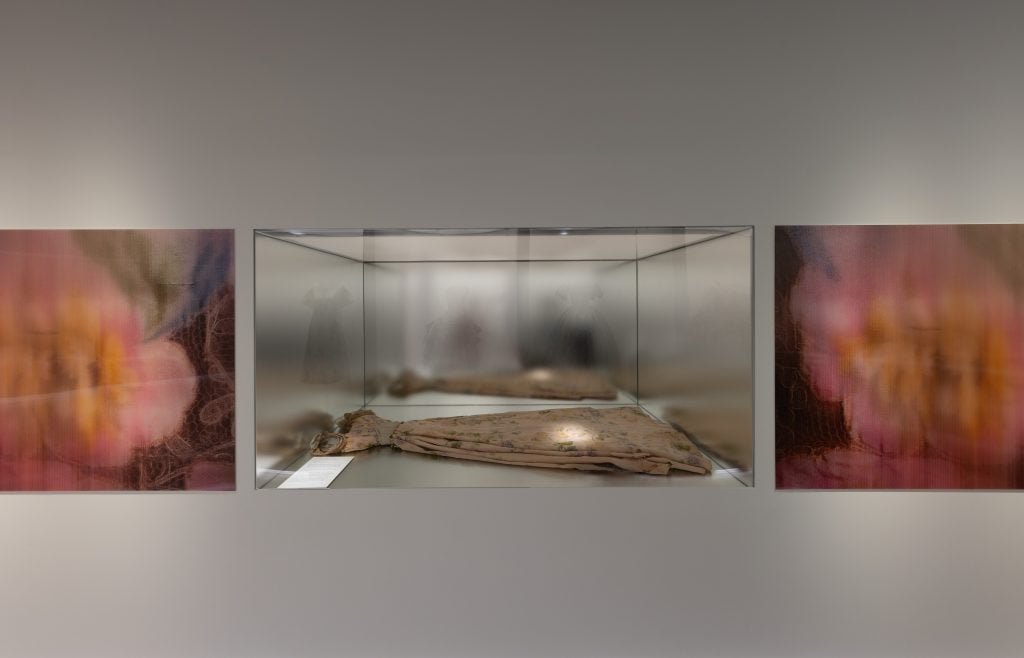
Gallery View, Blurred Blossoms Photo © The Metropolitan Museum of Art
“I was really struck by how many garments we have in our collection that are inspired by the natural environment,” Bolton said. “The more I thought, nature actually is the ultimate metaphor for fashion in terms of its rebirth and its renewal, the cycles of fashion, the cycles of nature, but also ideas of ephemerality, impermanence, and transience.”
Familiar fashion houses like Dior, Loewe, and Maison Margiela are featured in the exhibition alongside upstarts like Thebe Magugu and Torishéju. Eighty new pieces were acquired for the permanent collection and the exhibition. “One of our strategies is to collect more diverse designers,” Bolton continued. “Designers who are just emerging. Designers who are also engaging in more ethical and environmental practices. So, we’ve collected our first piece by Phoebe English, who is a designer who works a lot with natural dyes, with recycled materials. The same with Paolo Carzana. There’s a great dress by Olivia Cheng that’s actually covered in jewel beetles from a sustainable farm in Thailand. We wanted to use the exhibition because of its connection to nature as an opportunity to highlight some of these designers who are working with these ethical practices.”
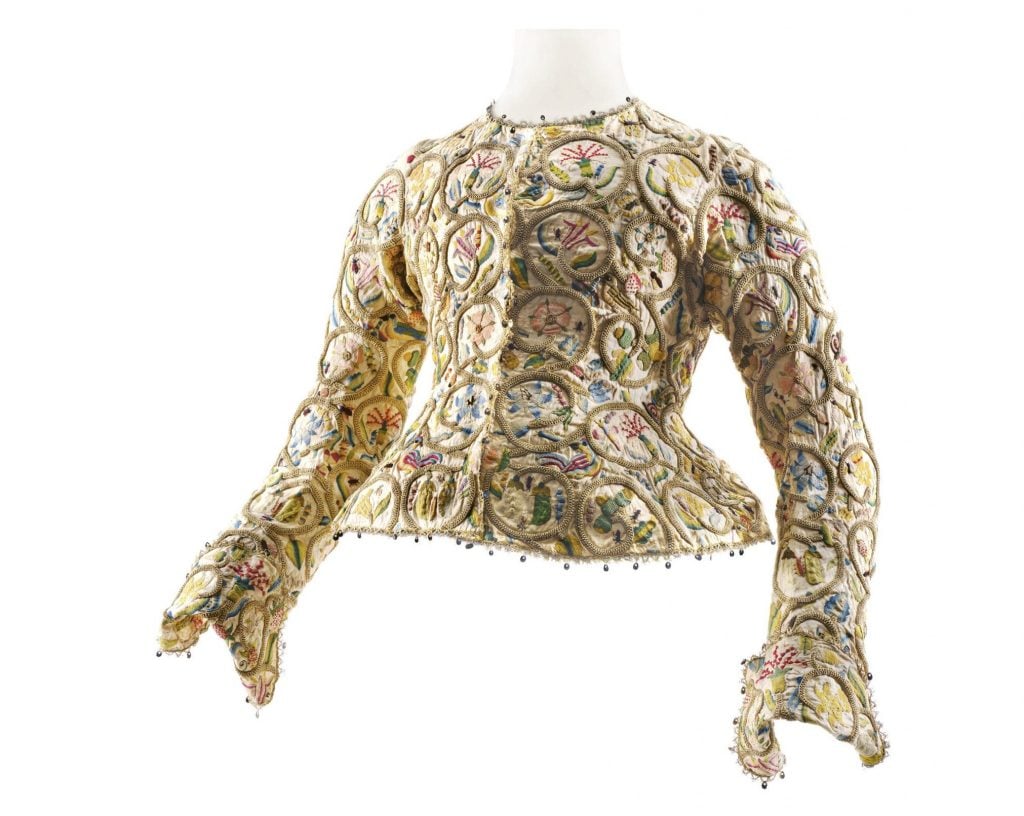
Waistcoat, British (1615−20). Photography © Nick Knight, 2024. Image courtesy of The Metropolitan Museum of Art.
One of the earliest pieces on display is a sumptuously embroidered British waistcoat, estimated to be from 1615. With its Lilliputian-sized, I was reminded of seeing the musician Prince’s clothes and stagewear when they were up for auction last year. The waistcoat is positioned in dialogue with, a Karl Lagerfeld Chanel evening dress which was directly inspired by its filigreed lush botanic frenzy. “We’ve always tried to do that in our exhibitions, juxtapose historical and contemporary pieces,” Bolton explained. “There’s an odd energy when you look at them together. It’s as if the historical piece informs the contemporary piece. The contemporary piece enlivens the historical piece. There is this electrical current when you see them together. It’s also a way to give younger visitors, who may be unfamiliar with the early material, access into history. It was part of the strategy, reawakening conceptually and through interpretation.”
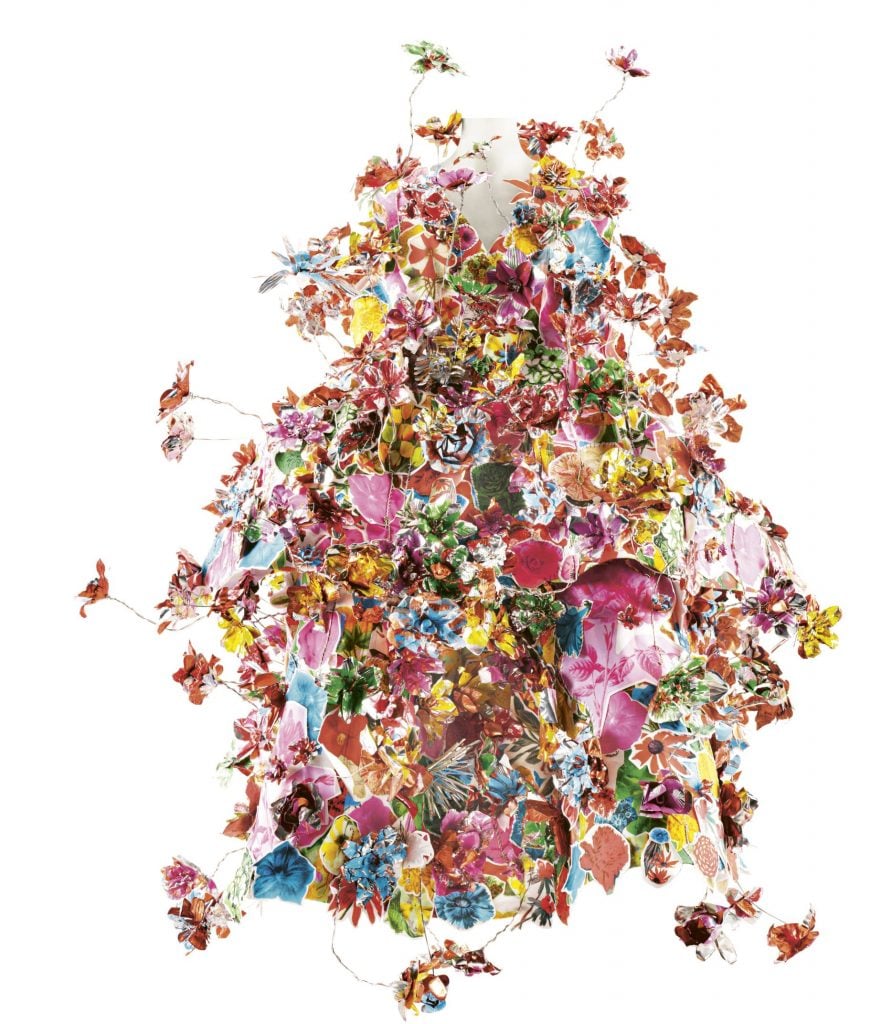
Ensemble, Francesco Risso for Marni, spring/summer 2024; Courtesy Marni. Photography © Nick Knight, 2024. Image courtesy of The Metropolitan Museum of Art.
The floral journey dominates the experience, but it isn’t a haphazard thrown-together bouquet. “I wanted to focus on the symbolism of flowers and the changing symbolism of flowers,” Bolton explained. “The poppy has been associated since classical times with the idea of death, mortality, and blood. There’s one particular dress by Paquin and it’s extraordinary. It’s printed with these tiny poppies that look like drops of blood, and then we have these appliques at the chest and the hand that look almost like blood clots.”
He continued, “A lot of it was trying to pick up on the symbolism and sometimes the contradictory symbolism of flowers. The rose is another example. The rose is about life and fertility and sexuality and romance, but it’s also about death. So, in that gallery, we have three examples of living rose dresses, and then we have one of our sleeping beauties, a Lanvin and the tulle is so fragile, it’s lying flat.”
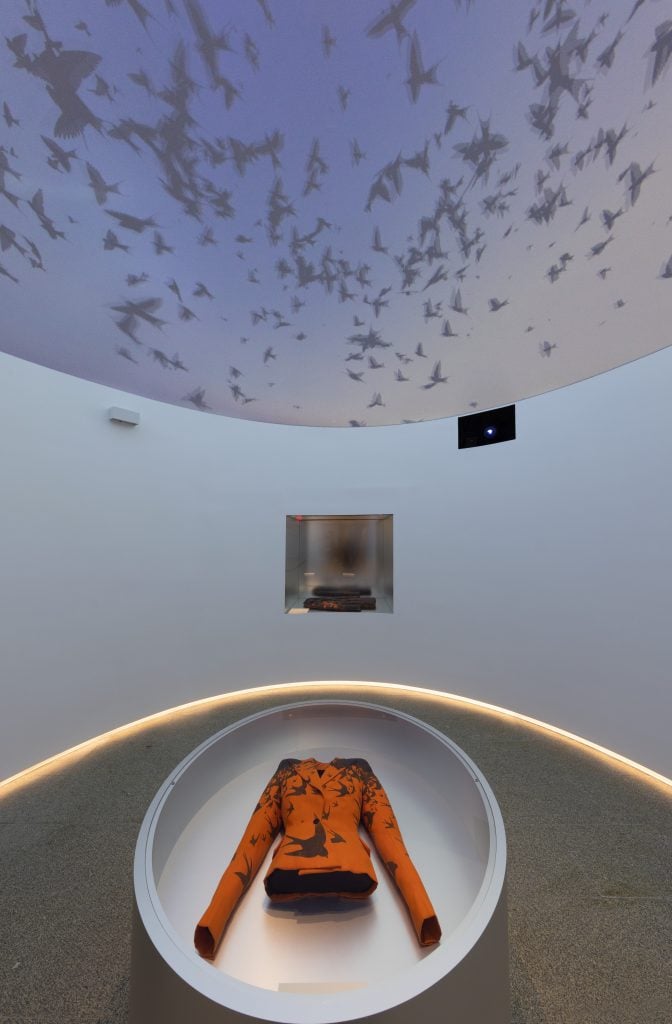
Gallery View, The Birds Photo © The Metropolitan Museum of Art
“Sleeping Beauties” makes the case that it’s a fashion exhibition with depth—and it works. It is a full-sensory journey (and at times, yes, a sensory overload). (There is an entire smell portion which we will investigate next week.)
The exhibition’s soundtrack includes poems dramatically being read aloud, waves crashing, and there are birds cawing, specifically the malevolent ones from Hitchcock’s 1963 fright classic. The Met team went to Germany to find the actual original recordings from The Birds to pipe in to soundtrack a jacket from Alexander McQueen’s Spring/Summer 1995 collection (the film was also a favorite of the late designer). The McQueen coat is just one part of a darkly sinister aviary section. Other items include Simon Costin’s 1986 “Memento Mori” necklace forged with turkey claws and rabbit heads. The designer’s other contribution “The Nightingale and the Rose,” named after an Oscar Wilde story is made with an entire taxidermy bird and twisted brass.
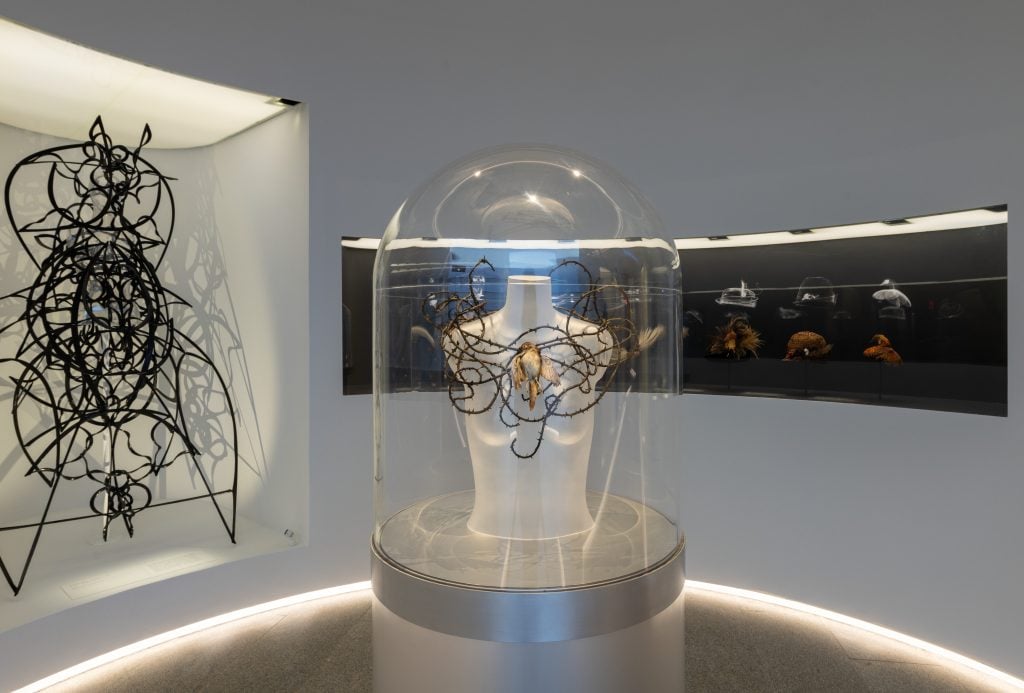
Gallery View, The Nightingale and the Rose Photo © The Metropolitan Museum of Art
“Birds have been very inspiring for fashion,” Bolton said. “But at the same time, they’ve also been one of his casualties and it’s like an amphitheater of these sad, poor birds have been sort of sacrificed for fashion and we’ve x-rayed them. So you see the bones and you see the beaks, and you see the eyes. It’s just so poetic walking into a space, seeing this necklace. So, it’s very melancholic.”
Alexander McQueen is well-represented, both by its founder “Lee” and his successor Sarah Burton, whose remarkable 2011 dress (made of dyed turkey feathers) looks like a swarm of monarch butterflies migrated to the wearer. “Lee made that dress with moths and it was deteriorating, the wings were falling off,” Bolton said of the house’s founder. “Sarah did it as a joyous celebration of nature.” Their approaches illustrate their allure and divide. “Sarah wasn’t as dark as Lee,” Bolton said. “There was a darkness to Lee that came across in his clothes very powerfully. That was part of his brilliance is that he was able to affect and evince these visceral emotions from you. Sarah is much softer. She shares the same interests as Lee. Nature was a huge part of Lee’s work as it is with Sarah’s. So there are themes, but how she approaches it, is gentler. Not as dark, but the craftsmanship is absolutely extraordinary. She was able to embrace the house codes because she trained with Lee, but also move it forward and create her own vocabulary and her own house codes.”
Bolton added, “McQueen would love this exhibition, I’m sure, because there’s so much darkness to it, but it’s also incredibly light.”
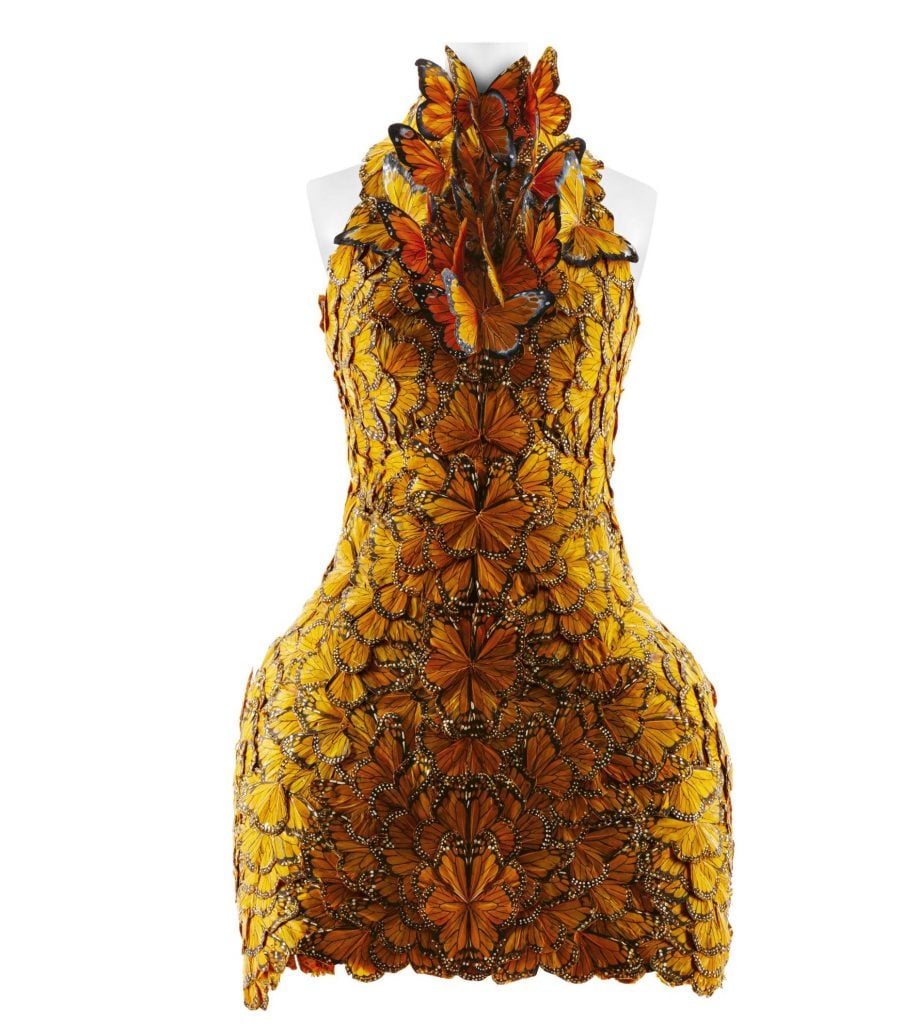
Dress, Sarah Burton for Alexander McQueen (British, founded 1992), spring/summer 2011; Photography © Nick Knight, 2024. Image courtesy of The Metropolitan Museum of Art.
The light moments are what stick with the viewer. One of my favorite detours is a case of seemingly silly vegetable-inspired hats. But then upon closer inspection, you’re gob-smacked by their intricacy and what expertise and effort it took to make something so silly. And then you see the dates. A Balenciaga trompe l’oiel cabbage hat from 1957 looks like it was made with a 3D printer last week. Stephen Jones’s “Costermonger” headpiece took in the entire produce section, and features miniature apples, leeks, potatoes, asparagus, broccoli and a host of other vitamin-packed options.
After the birds, bugs, flowers, and veggies, it’s off to the deep, deep sea for water deities, fish, and a whole lot of shells. Bolton crammed in so much to this exhibition, but still has a lot more to say through fashion.
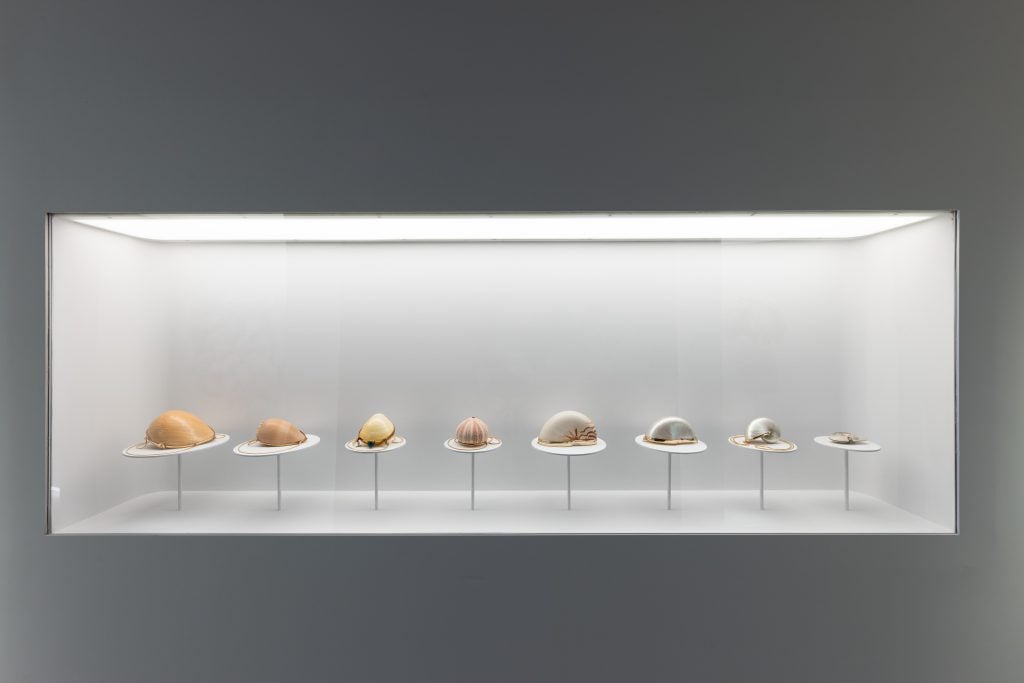
Gallery View, Seashells Photo © The Metropolitan Museum of Art
“I love that about museums, you can walk past a sculpture you’ve seen for 10 years and suddenly the light catches it in a way that. You haven’t seen before, and then suddenly it comes to life and you see it through different eyes,” he said. “I love the fact that objects have this affecting presence that can really move you depending on your state of mind and depending on the time of the day. I believe objects have an affecting presence. They have this inherent rhetorical power to move you. I’m never tired of it.”
For more with Costume Institute curator Andrew Bolton, tune in to our recent conversation on the Art Angle podcast where we discuss the inspirations behind “Sleeping Beauties” and more.





